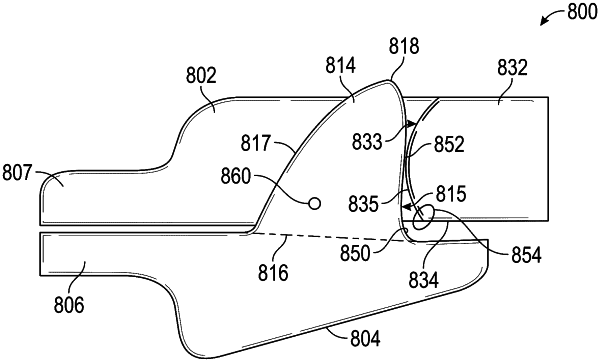| CPC A61F 5/566 (2013.01) [A63B 71/085 (2013.01); A61F 2005/563 (2013.01)] | 23 Claims |

|
1. A method of lowering heart rate during physical activity, the method comprising:
identifying a person having a smallest concentric airway cross-sectional area in need of being increased while awake;
providing the person with a mandibular repositioning device fitted for their respective mandible and maxilla comprising:
a maxillary piece comprising a backmost teeth mold and a tooth covering having a driver flange protruding laterally outward on a right side proximate the backmost teeth mold and/or on a left side proximate the backmost teeth mold, each driver flange having an anterior side with a convex curvature;
a mandibular piece comprising a tooth covering having a protrusive flange extending cranially therefrom positioned to have a posterior side engaged with the anterior side of each driver flange, the posterior side of each protrusive flange has a concave-to-convex curvature a base of the protrusive flange toward a most cranial point of the protrusive flange and a convex portion of the concave-to convex curvature engages the convex curvature of the driver flange in a rest position;
wherein downward movement of the mandibular piece moves the convex portion of the posterior side of the protrusive flange along the convex curvature of the driver flange, thereby moving a user's mandible forward;
wherein, during physical activity, the mandibular repositioning device increases a size of the person's smallest concentric airway cross-sectional area, thereby lowering said person's heart rate, wherein the mandibular piece has a plateau of a preselected height between the base of the protrusive flange and the tooth covering; wherein the preselected height of the plateau prevents disconnect between each protrusive flange and a respective driver flange relative to a fully open mouth measurement between incisors of the user.
|